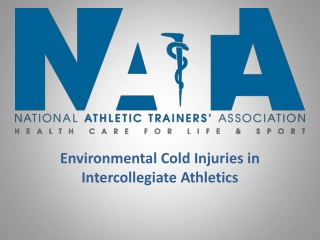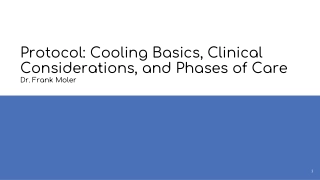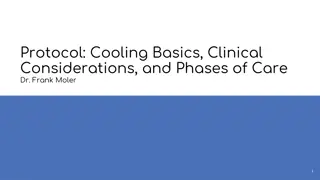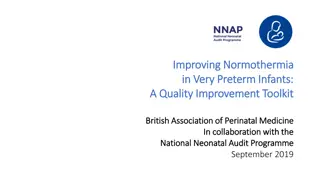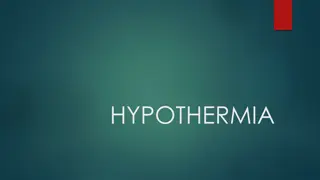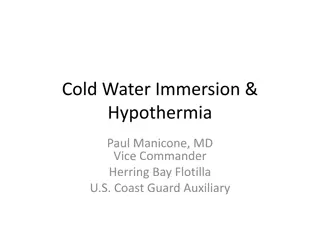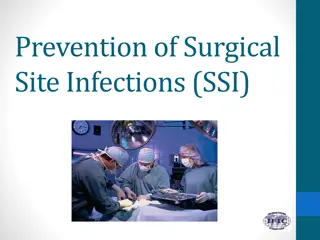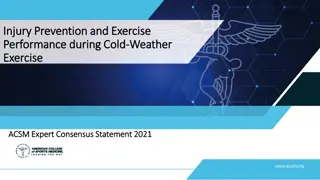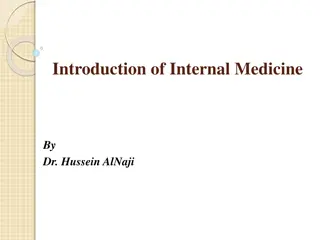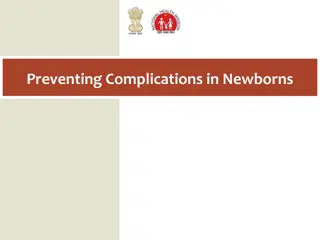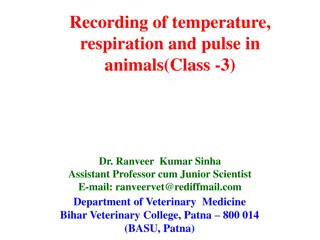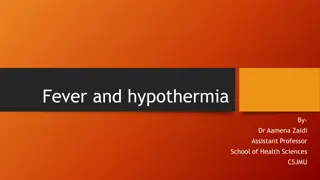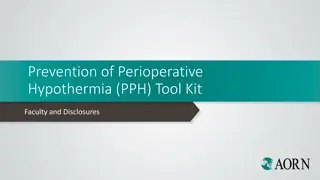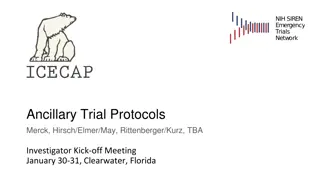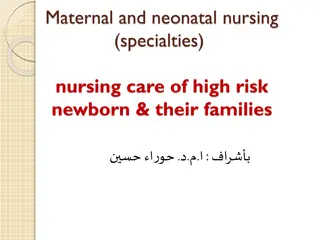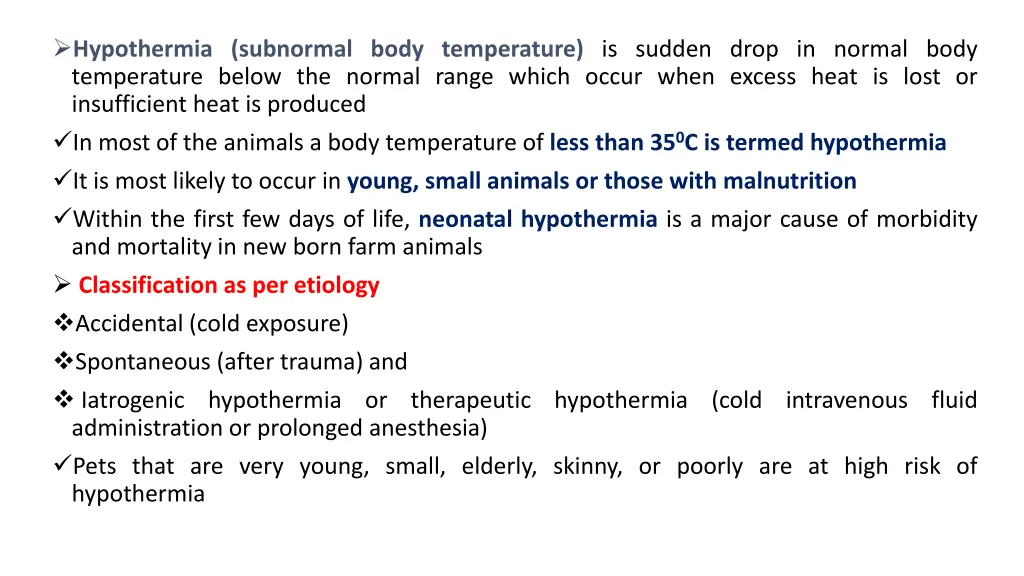
Understanding Hypothermia in Animals
Learn about hypothermia in animals, a condition of subnormal body temperature that can be life-threatening, especially in young, elderly, or undernourished animals. Explore the causes, clinical signs, and progression of hypothermia to enhance your knowledge of this critical condition.
Uploaded on | 0 Views
Download Presentation

Please find below an Image/Link to download the presentation.
The content on the website is provided AS IS for your information and personal use only. It may not be sold, licensed, or shared on other websites without obtaining consent from the author. If you encounter any issues during the download, it is possible that the publisher has removed the file from their server.
You are allowed to download the files provided on this website for personal or commercial use, subject to the condition that they are used lawfully. All files are the property of their respective owners.
The content on the website is provided AS IS for your information and personal use only. It may not be sold, licensed, or shared on other websites without obtaining consent from the author.
E N D
Presentation Transcript
Hypothermia (subnormal body temperature) is sudden drop in normal body temperature below the normal range which occur when excess heat is lost or insufficient heat is produced In most of the animals a body temperature of less than 350C is termed hypothermia It is most likely to occur in young, small animals or those with malnutrition Within the first few days of life, neonatal hypothermia is a major cause of morbidity and mortality in new born farm animals Classification as per etiology Accidental (cold exposure) Spontaneous (after trauma) and Iatrogenic hypothermia or therapeutic administration or prolonged anesthesia) Pets that are very young, small, elderly, skinny, or poorly are at high risk of hypothermia hypothermia (cold intravenous fluid
Etiology Exposure to cold for long time Wet fur and skin Anesthesia for prolonged period Malnutrition Hypocalcaemia Hypothyroidism Haemorrhages Anaemia Shock
Pathogenesis Exposure to cold ambient temperature Heat loss Non-shivering thermogenesis Hypothermia Heart rate RR Shivering BMR Pulse rate Muscular weakness Mental depression Respiratory failure Recumbency, COMA AND Death Depletion of brown adipose tissue depletion
Neonates suddenly exposed to cold ambient temperature causes falls in rectal temperature below 370C and may even drop to 300C Non-shivering induced thermogenesis may resulting in the loss of brown adipose tissue deposits Piglets- Nervous signs with an insufficient intake of milk and exposure to cold environmental temperature severe hypoglycaemia Clinical signs/Classification Mild hypothermia (35-37oC) Shivering Feeling cold to touch Weakness Lack of alertness
Moderate hypothermia (32 -350C) Bradycardia Vasoconstriction Low BP Shallow breathing Stupor like state Severe hypothermia (<32 0C) Difficult breathing Dilated pupil Muscle stiffness Pale or blue gums Dry mouth Reduced core temperature Coma and Death
Clinical Pathology Apparently of limited value Decreased serum concentration of glucose, non-esterified fatty acid and immunoglobulins Necropsy findings Absence of milk in abomasum Sub-cutaneous oedema and haemorrhages of body extremities Noticeable reductions in the quality of perirenal adipose tissue
Treatment First Aid Move the animal to warm dry location Cover the patient with blanket Insulate the patient body from the cold ground Monitor breathing- Provide cardiopulmonary resuscitation (CPR) immediately in case of stopped breathing or appears dangerously low Provide warm water- if animal is alert and able to shallow Use warm, dry compresses- Use a first aid warm compresses (use warm liquid to apply heat to an area) e.g. towel soaked in warm water or a dry warm compress (Uses a dry surface to transfer heat) e.g. warm water in a plastic bottle or a dryer- warmed towel or heating pad
Medicinal treatment Rewarming approaches are categorized as passive external activeexternal or activeinternal Passive external rewarming (inventions to promote heat retention)- Animal with mild hypothermia, it is enough to cover them with heated blankets and offer warm fluid to drink or increase room temperature Active external rewarming involves the application of external heat to skin and peripheral tissues eg. Air blower, heat lamp, warm water bottles wrapped in cloths The immersion of hypothermic animals in water at 380C can result in the recovery to a euthermic state in an about half an hour
Active internal rewarming Warm intra-venous fluids- Intravenous 50% dextrose at the dose rate of 1ml/kg body weight (as having moderate to severe hypoglycaemia) Intra-peritoneal administration of warm glucose solutions to correct hypothermia Repeated administration of warm (400C) 0.9% NaCl enemas via a flexible soft tube through the anus Active Internal lavage eg bladder lavage, gastric lavage etc Airways rewarming- Humified oxygen administered with a mask or nasal tube can warm the airways and help raise the temperature of body Extracorporeal (medical procedure performed outside the body- Dialysis to warm the blood
Multiple choice 1. What is the most common cause of hypothermia in animals? A. Excessive food intake B. Prolonged exposure to cold environments C. Heat stroke D. High metabolic rate 2. Which organ is primarily responsible for thermoregulation in animals? A. Liver B. Heart C. Hypothalamus D. Kidneys 3. Which of the following is NOT a compensatory mechanism against hypothermia? A. Shivering B. Vasodilation C. Vasoconstriction D. Non-shivering thermogenesis 4. What is a common sign of moderate to severe hypothermia in animals? A. Hyperactivity B. Increased appetite C. Muscle stiffness and bradycardia D. Bright red mucous membranes
5. Which animals are most at risk for developing hypothermia? A. Healthy adult animals in warm climates B. Neonates and small animals C. Large adult ruminants D. Animals with thick fur 6. What temperature range typically indicates mild hypothermia in most mammals? A. 37.5 C to 39 C B. 35 C to 37 C C. 33 C to 35 C D. Below 30 C 7. Which of the following is a potential complication of severe hypothermia in animals? A. Increased fertility B. Cardiac arrest C. Increased metabolism D. Hypertension 8. What is the safest approach to rewarming a hypothermic animal? A. Immersing in hot water B. Applying ice packs to the core C. Gradual rewarming using blankets and warm IV fluids D. Leaving the animal in the sun

